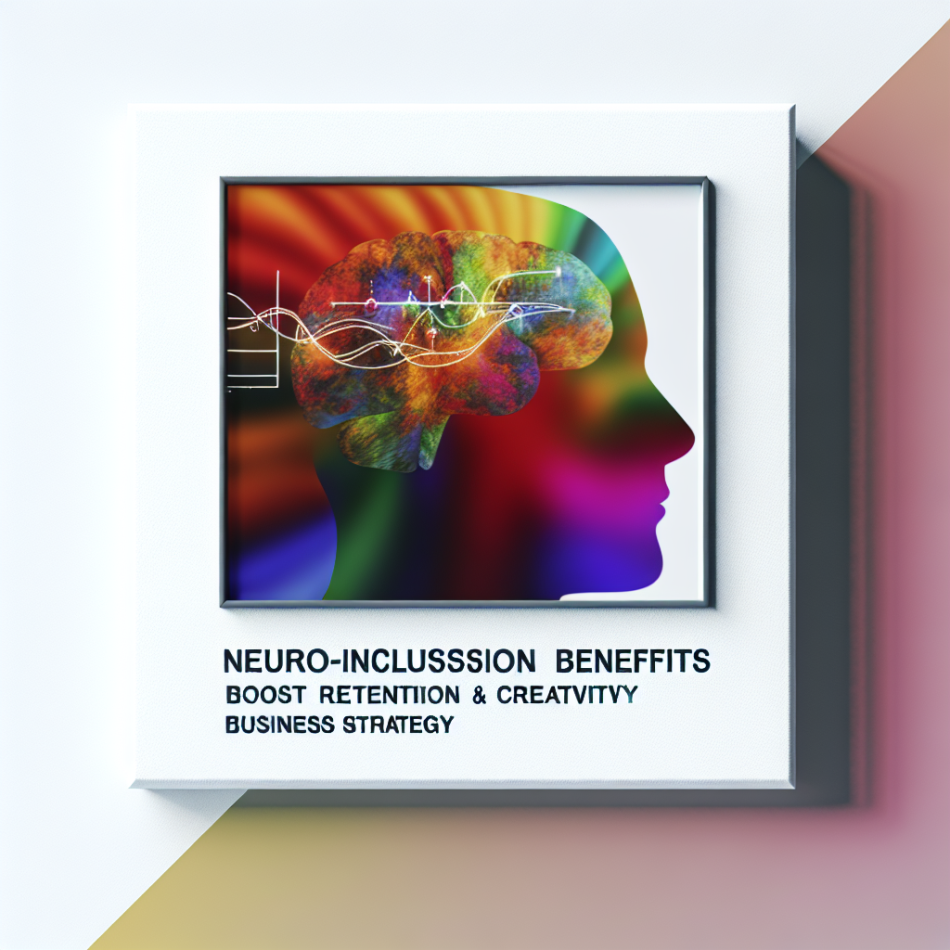The Power of Neuroinclusion: How Forward-Thinking Companies Boost Retention, Performance, and Creativity
In today’s competitive business landscape, organisations are discovering that neuroinclusion—embracing employees with diverse neurological conditions like autism, ADHD, or dyslexia—isn’t just a moral imperative but a strategic advantage. Data reveals that companies prioritising neurodiversity see measurable improvements in retention rates, operational performance, and creative problem-solving. This article explores the evidence behind these outcomes and how businesses can harness neuroinclusion to drive sustainable success.
Understanding Neuroinclusion and Its Growing Importance
Neuroinclusion refers to creating workplaces where neurological differences are recognised, valued, and supported through tailored policies. With an estimated 15–20% of the global population identifying as neurodivergent, businesses that fail to adapt risk excluding a significant talent pool. Beyond ethical considerations, research from the Chartered Institute of Personnel and Development (CIPD) highlights that neuroinclusive practices correlate with a 30% increase in employee satisfaction, laying the groundwork for long-term organisational resilience.
Neuroinclusion Drives Higher Employee Retention
High turnover remains a critical challenge across industries, costing companies up to 200% of a role’s annual salary in recruitment and training. Neurodivergent employees, however, often exhibit exceptional loyalty when provided with supportive environments. A 2023 study by Deloitte found that organisations with structured neuroinclusion programmes retained neurodivergent staff 50% longer than industry averages. For example, JPMorgan Chase reported a 90% retention rate among participants in its Autism at Work initiative—double its overall rate.
Key retention drivers include:
- Customised role alignment: Matching neurodivergent individuals to roles that leverage their strengths (e.g., pattern recognition, attention to detail).
- Flexible work models: Adjusting sensory environments, communication styles, or schedules to reduce burnout.
- Mentorship networks: Peer support systems that foster belonging and professional growth.
Enhanced Performance Through Cognitive Diversity
Neurodiverse teams consistently outperform homogenous groups in complex problem-solving tasks, according to a Harvard Business Review analysis. This “cognitive diversity” enables teams to approach challenges from multiple angles. For instance, SAP’s Autism at Work programme participants demonstrated a 94% accuracy rate in software testing—surpassing neurotypical peers by 10%. Similarly, Microsoft observed that neurodivergent engineers detected bugs 30% faster due to heightened analytical focus.
Performance gains are amplified in sectors requiring innovation, such as tech, finance, and R&D. A UK-based fintech firm reported a 40% reduction in project delivery times after integrating neurodiverse talent into data analysis teams, attributing this to unconventional problem-solving methods.
Unlocking Creativity in Neurodiverse Teams
Neurodivergent individuals often possess unique cognitive frameworks that fuel creativity. A Forrester Consulting study found that 72% of companies with neuroinclusive policies reported higher rates of product innovation. For example, a neurodivergent designer at a leading automotive firm proposed a groundbreaking dashboard interface that improved user accessibility—a concept overlooked by neurotypical teams. Similarly, advertising agencies like WPP have credited neurodiverse employees with devising campaigns that resonate with broader, often underserved audiences.
Creativity thrives when:
- Divergent thinking is encouraged: Neurodivergent individuals may challenge conventional assumptions, sparking “outside-the-box” ideas.
- Collaborative environments are structured: Clear guidelines for brainstorming reduce ambiguity, allowing neurodivergent employees to contribute confidently.
- Failure is destigmatised: Iterative innovation requires psychological safety, particularly for those who may process feedback differently.
Building Effective Neuroinclusion Strategies
Realising these benefits requires deliberate, systemic action. Best practices include:
- Comprehensive training: Educate managers on neurodiversity to reduce bias and equip teams with communication tools (e.g., clear instructions, sensory-friendly spaces).
- Partnerships with specialist organisations: Collaborate with groups like the National Autistic Society to refine hiring processes and workplace adjustments.
- Continuous feedback loops: Regularly assess policies through employee surveys, ensuring neurodivergent voices shape strategy.
Companies like EY and IBM have established “neurodiversity hubs” to centralise resources, from assistive technologies to career development plans. Crucially, these initiatives must be embedded into broader DEI frameworks to avoid siloed efforts.
Conclusion: Neuroinclusion as a Catalyst for Business Success
The data is unequivocal: neuroinclusion isn’t merely a box-ticking exercise but a proven driver of retention, performance, and creativity. By fostering environments where neurological differences are celebrated, companies unlock untapped potential, gaining a competitive edge in innovation and employee loyalty. As workforce expectations evolve, businesses that prioritise neurodiversity will not only future-proof their operations but also lead the charge in building more equitable, dynamic workplaces. The question is no longer if organisations should adopt these strategies—but how quickly they can afford to do so.
